Introduction

Communication is a fundamental aspect of any relationship, including the one you share with your beloved pet. Whether you have a dog, cat, bird, or any other furry or feathered friend, developing a strong connection through effective communication is key to understanding their needs and ensuring their well-being.
Establishing clear lines of communication with your pet not only allows you to meet their physical and emotional needs but also strengthens the bond you share. It enables you to understand their body language, decipher their vocalizations, and respond appropriately to their actions and behaviors. By actively listening and observing your pet, you can build trust and create a safe environment where they feel understood and loved.
In this article, we will explore the power of communication in developing a connection with your pet. We will delve into the importance of understanding your pet's body language, building trust, communicating effectively, and developing a routine. By implementing these strategies, you can enhance your relationship with your pet and experience the joy of a deeper connection. So let's dive in and unlock the power of communication with your furry friend!
Why Communication is important with your pet
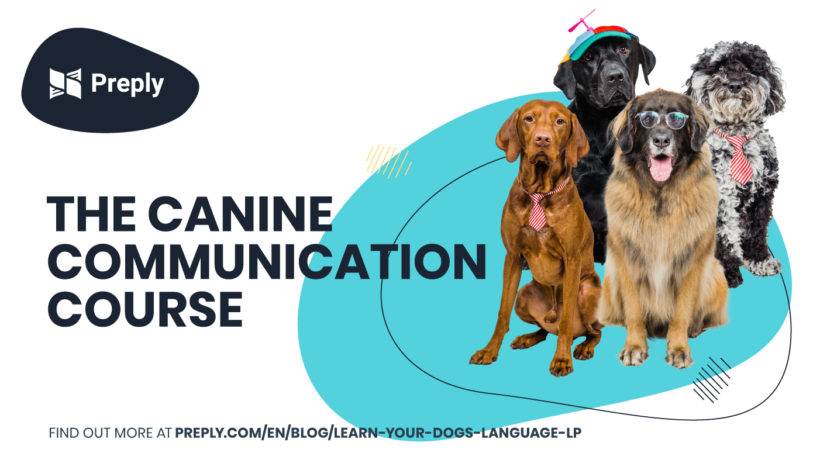
Effective communication is crucial in developing a strong and meaningful connection with your pet. It allows you to understand their needs, desires, and emotions, while also enabling you to convey your own intentions and expectations. Communication serves as the foundation for building trust and fostering a harmonious relationship with your pet.
By engaging in open and clear communication, you can address any behavioral issues or concerns that may arise. This promotes a better understanding between you and your pet, helping to prevent misunderstandings and reduce stress. Moreover, communication allows you to provide guidance and direction to your pet, ensuring their safety and well-being.
Through effective communication, you can establish boundaries and reinforce positive behaviors. By using consistent cues, signals, and commands, you can guide your pet's actions and reinforce desirable habits. This helps to create a structured environment that promotes learning and development.
In addition, communication enables you to recognize and respond to your pet's emotional state. By being attuned to their body language, vocalizations, and expressions, you can better understand their feelings and address any discomfort or anxiety they may be experiencing.
Overall, communication is essential for establishing a deep bond with your pet. It allows for mutual understanding, trust, and companionship. By investing time and effort into developing effective communication skills, you can strengthen your relationship with your pet and create a happier and more fulfilling life together.
The benefits of developing communication with your pet

Developing communication with your pet can bring a multitude of benefits to both you and your furry companion. By understanding and effectively communicating with your pet, you can create a stronger bond and build a deeper connection.
One of the key benefits of developing communication with your pet is that it allows you to better understand their needs and emotions. By paying attention to their body language, vocalizations, and expressions, you can decipher what they are trying to communicate to you. This understanding helps in addressing their needs promptly and providing them with the care and attention they require.
Furthermore, effective communication with your pet promotes trust and strengthens your relationship. When your pet feels understood and heard, they feel more secure and confident in their interactions with you. This trust forms the foundation for a loving and harmonious bond between you and your pet.
Additionally, developing communication skills with your pet can also aid in preventing behavioral issues. By recognizing early signs of discomfort or stress through their communication cues, you can address these issues before they escalate.
In conclusion, the benefits of developing communication with your pet are numerous. It allows for a better understanding of their needs and emotions, strengthens the bond between you and your pet, and helps in preventing behavioral problems. So, invest time in developing effective communication skills with your pet to enhance your relationship and create a happier and healthier environment for both of you.
Understanding your pet’s body language

Understanding your pet's body language is crucial for effective communication. By observing their movements, postures, and facial expressions, you can gain valuable insight into what they are feeling and trying to convey.
To decode your pet's body language, pay attention to their tail position, ear position, and overall body posture. A wagging tail may indicate happiness or excitement, while a tucked tail could signal fear or anxiety. Similarly, erect ears may suggest alertness or curiosity, while flattened ears may indicate fear or submission.
It's also important to learn your pet's specific expressions and gestures. For example, a dog may use a play bow to invite interaction, while a cat may flick its tail when annoyed or agitated. By understanding these unique cues, you can better respond to your pet's needs and emotions.
Remember to approach your pet calmly and avoid any sudden movements that may startle them. By respecting their personal space and communicating in a gentle manner, you will foster trust and strengthen your bond. Understanding your pet's body language is a powerful tool for building a deeper connection and ensuring their well-being.
Decoding your Pet’s body language

Decoding your pet's body language is an essential skill for any pet owner. By understanding the subtle cues and signals that your pet displays, you can better comprehend their emotions and needs. Paying attention to their body language can help you create a stronger bond and prevent any misunderstandings.
One important aspect of decoding your pet's body language is observing their posture. For example, a relaxed and loose body indicates that your pet is comfortable and content, while a tense or stiff posture may indicate fear or aggression. Additionally, tail position and movement can provide valuable insights into their mood. A wagging tail often signifies happiness, while a tucked tail suggests anxiety or fear.
Facial expressions are another crucial element to consider when decoding your pet's body language. Dogs, for instance, may display relaxed eyes, open mouths, and soft ears when they are at ease. On the other hand, narrowed eyes, bared teeth, or flattened ears can indicate stress or aggression.
By familiarizing yourself with your pet's unique body language, you can better understand their needs, emotions, and overall well-being. This understanding will enable you to respond appropriately and strengthen your communication with your beloved companion.
Learning your pet's expressions and gestures

Learning your pet's expressions and gestures is crucial in developing effective communication. By understanding how your pet expresses themselves, you can better comprehend their emotions and needs. Paying attention to their facial expressions, body postures, and tail wagging or movement can provide valuable insights into their state of mind.
When it comes to expressions, dogs often use their eyes, ears, and mouth to convey different emotions. For example, a relaxed dog may have soft eyes and an open mouth, while a fearful or anxious dog may exhibit wide eyes and a closed mouth. Cats, on the other hand, may communicate through their ears, with flattened ears indicating aggression or fear.
Gestures also play a significant role in pet communication. Dogs might wag their tails when happy or excited, while cats may flick their tails when annoyed or agitated. Understanding these movements can help you respond appropriately and ensure a positive interaction.
By observing and learning your pet's expressions and gestures, you can establish a deeper connection and address their needs more effectively. Remember to be patient and attentive, as every pet has unique ways of expressing themselves.
Building Trust with your pet
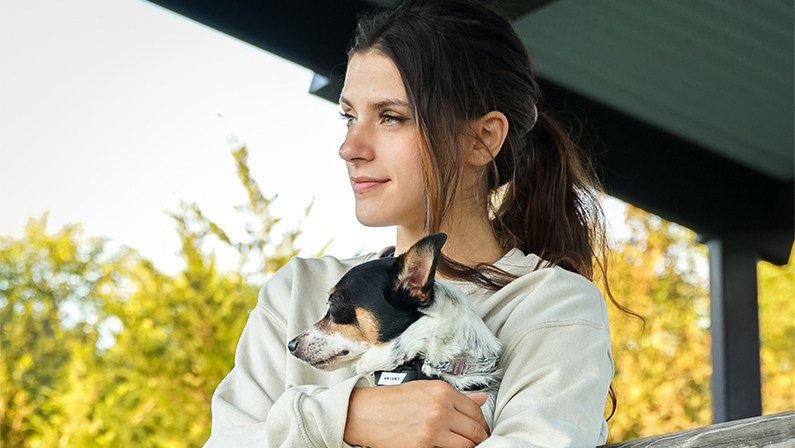
Building trust with your pet is essential for establishing a strong bond and maintaining a healthy relationship. Trust forms the foundation of effective communication and can greatly enhance your connection with your furry friend. To build trust, it is crucial to create a safe and stress-free environment for your pet. This involves providing them with a comfortable space, meeting their basic needs, and ensuring their physical and emotional well-being.
Establishing trust also requires consistency and predictability. Stick to a routine that your pet can rely on, as this helps them feel secure and reduces anxiety. By setting clear rules and boundaries, you can establish a sense of structure that promotes trust and understanding.
Positive reinforcement strategies and techniques are key in building trust. Reward your pet for good behavior and use positive reinforcement to encourage desired actions. Avoid negative communication or punishment, as this can erode trust and create fear or aggression.
By focusing on building trust, you can strengthen the bond with your pet and create a harmonious and fulfilling relationship based on mutual understanding and respect. Trust is the bridge that allows effective communication to flourish, leading to a deeper connection with your beloved pet.
Establishing trust and bonding with your pet

Establishing trust and bonding with your pet is crucial for developing a strong and healthy relationship. Trust forms the foundation of effective communication between you and your furry companion. When your pet feels safe and secure in your presence, they are more likely to open up and respond positively to your cues and commands.
To establish trust, it is important to be patient and consistent in your interactions with your pet. Spend quality time together engaging in activities that they enjoy, such as playing, grooming, or simply cuddling. Show them love and affection through gentle touches and soothing words.
Building trust also involves setting clear boundaries and providing structure for your pet. This helps them understand what is expected of them and creates a sense of security. Use positive reinforcement techniques to reward good behavior, such as treats or praises, and avoid punishment or harsh corrections.
By consistently demonstrating love, patience, and respect, you can strengthen the bond with your pet and create a trusting relationship. Remember, trust takes time to build, so be persistent and understanding throughout the process.
Creating a safe and stress-free environment

Creating a safe and stress-free environment is crucial for effective communication with your pet. By providing a secure and comfortable space, you can help your pet feel relaxed and at ease, enabling better communication between the two of you.
To create a safe environment, it is important to remove any potential hazards that could cause harm to your pet. Ensure that toxic substances, sharp objects, and small items that can be swallowed are stored securely out of reach. Additionally, make sure your home is properly pet-proofed, such as using baby gates to restrict access to certain areas or covering electrical cords to prevent chewing.
Reducing stress is also essential for effective communication. Create a calm and peaceful atmosphere by providing a designated area for your pet's rest or retreat. This space should be quiet, comfortable, and free from excessive noise or disturbances.
Establishing routines and consistent schedules can also help reduce stress for your pet. By providing regular meal times, exercise, and play sessions, you create predictability and stability in their daily lives.
By creating a safe and stress-free environment, you can foster trust and open communication with your pet, allowing for a deeper connection and understanding.
Communicating effectively with your pet
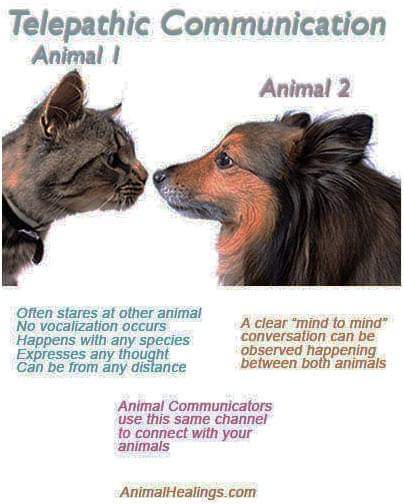
Communicating effectively with your pet is crucial for building a strong bond and understanding between you. By using positive reinforcement strategies and techniques, you can encourage good behavior and reinforce the desired actions in your pet. This involves rewarding your pet with treats, praise, or playtime when they exhibit the behaviors you want to encourage.
Avoiding negative communication and punishment is equally important. Yelling, hitting, or scolding your pet can create fear and anxiety, hindering their ability to trust and communicate with you. Instead, focus on redirecting their behavior or providing alternatives to undesirable actions.
Understanding your pet's vocalizations is another aspect of effective communication. By deciphering their barks, meows, or chirps, you can better understand their needs and emotions.
Developing active listening skills with your pet involves observing their behavior and responding accordingly. Pay attention to their body language, facial expressions, and gestures to gauge their comfort level and address any concerns they may have.
Non-verbal communication, such as touch and actions, also plays a significant role in communicating with your pet. Gently stroking or scratching your pet in areas they enjoy can convey affection and reassurance.
By developing a routine that provides consistency and predictability for your pet, you establish a sense of security and trust. Clearly defining rules and boundaries helps them understand what is expected of them and promotes a harmonious coexistence.
In conclusion, effective communication with your pet is vital for maintaining a healthy relationship. By using positive reinforcement, understanding vocalizations, actively listening, utilizing non-verbal cues, and establishing a routine, you can deepen your connection with your furry friend and ensure their well-being.
Positive reinforcement strategies and techniques for pets
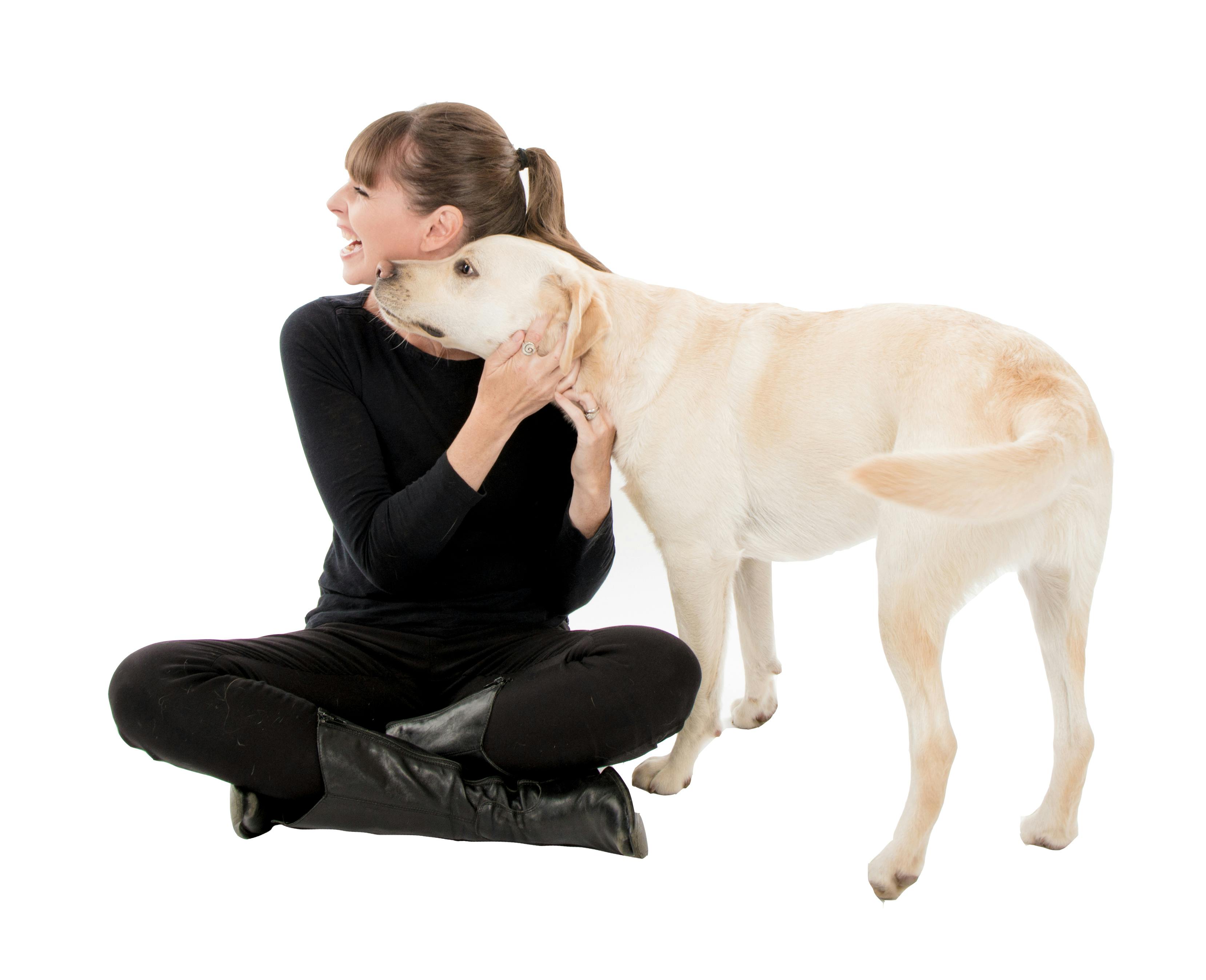
Positive reinforcement is a powerful tool for developing effective communication with your pet. By using positive reinforcement strategies and techniques, you can encourage desired behaviors and strengthen the bond between you and your furry friend.
One effective technique is to reward your pet with treats or praise immediately after they exhibit a desirable behavior. This helps them associate the behavior with a positive outcome, increasing the likelihood of repetition. For example, if you want to teach your dog to sit, you can give them a treat and praise when they successfully sit on command.
Another strategy is clicker training, where you use a clicking sound to mark the desired behavior followed by a reward. This helps your pet understand what specific action led to the reward, making it easier for them to learn new commands or tricks.
Consistency is key when using positive reinforcement. It's important to reward your pet consistently for desired behaviors and avoid rewarding or reinforcing unwanted behaviors unintentionally.
Remember, positive reinforcement focuses on rewarding good behavior rather than punishing bad behavior. This creates a positive and enjoyable learning experience for your pet, strengthening your bond and fostering effective communication.
By implementing these positive reinforcement strategies and techniques, you can develop a strong and trusting relationship with your pet based on clear communication and mutual understanding.
Avoiding negative communication and punishment

Avoiding negative communication and punishment is crucial when developing a strong connection with your pet. Using positive reinforcement strategies and techniques is far more effective in promoting desired behaviors. Punishment can create fear and anxiety in your pet, which can lead to aggression or withdrawal.
When communicating with your pet, it's important to focus on rewarding good behavior rather than punishing bad behavior. Positive reinforcement involves rewarding your pet with treats, praise, or playtime when they exhibit the desired behavior. This helps them associate that behavior with positive outcomes and encourages them to repeat it.
Instead of scolding or yelling at your pet when they misbehave, try redirecting their attention to a more appropriate behavior. For example, if your dog is chewing on furniture, provide them with a chew toy instead and praise them for chewing on it.
Additionally, it's important to remember that pets respond best to consistency and patience. Avoid using physical punishment, such as hitting or yelling, as this can damage the trust and bond you have with your pet.
By focusing on positive reinforcement and avoiding negative communication and punishment, you can foster a healthy and loving relationship with your pet based on trust and understanding. Guideline: {sectionGuideline}
Understanding your pet’s vocalizations

Understanding your pet’s vocalizations is crucial in developing effective communication with them. By deciphering their sounds and understanding what they mean, you can better meet their needs and strengthen your bond.
Pets communicate through various vocalizations, such as barks, meows, purrs, chirps, and growls. Each sound carries a different meaning and can convey emotions, desires, or warnings. For example, a dog's bark can indicate excitement, fear, or the need for attention, while a cat's meow can express hunger, frustration, or affection.
To understand your pet's vocalizations, it is important to pay attention to the context and accompanying body language. This will help you interpret whether the sound is a request, a warning, or simply an expression of emotion. Additionally, take note of any consistent patterns or variations in their vocalizations, as this can provide valuable insight into their needs and preferences.
By understanding and responding appropriately to your pet's vocalizations, you can strengthen your communication and deepen your connection with them. It allows you to address their needs promptly and effectively, ensuring their well-being and fostering trust and understanding between you.
Deciphering your pet's vocalizations
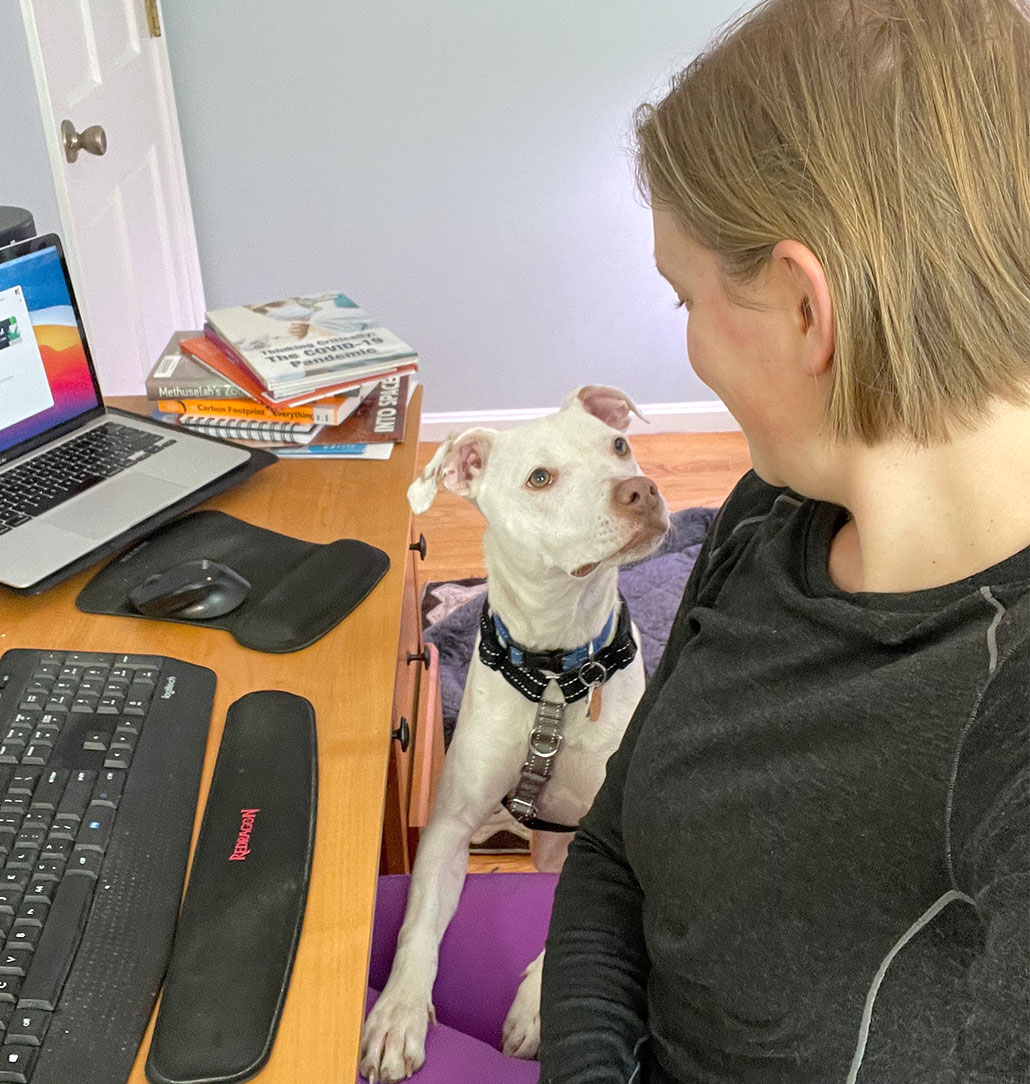
Deciphering your pet's vocalizations is an essential aspect of communication. By understanding the various sounds and noises your pet makes, you can gain valuable insights into their emotions and needs. Dogs, for example, use different barks to convey different messages. A high-pitched bark may indicate excitement or fear, while a low, continuous bark may signify aggression or warning.
Cats also have a range of vocalizations, from meows to purrs. A short, high-pitched meow might mean they are greeting you, while a long, drawn-out meow could indicate hunger or discomfort. Paying attention to the tone, pitch, and intensity of your pet's vocalizations can help you gauge their emotional state and respond accordingly.
When deciphering your pet's vocalizations, it is important to consider the context in which they occur. Pay attention to the accompanying body language and other cues to get a complete understanding of what your pet is trying to communicate.
By learning to interpret your pet's vocalizations, you can better meet their needs and strengthen the bond between you.
Learning your pet’s sounds and noise
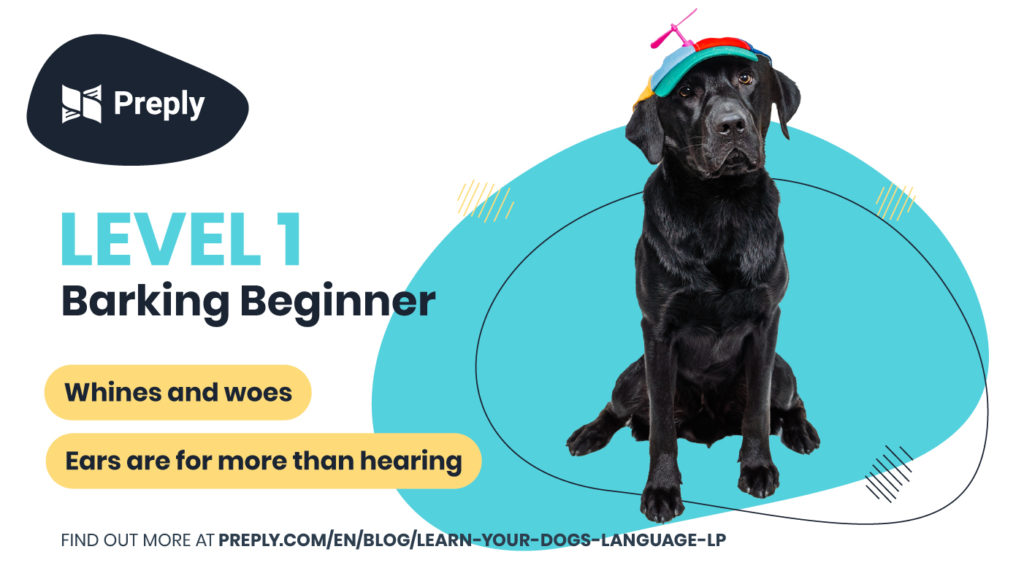
Learning your pet's sounds and noise is an essential aspect of communication. Each pet has unique vocalizations that they use to express their needs, emotions, and desires. By understanding and interpreting these sounds, you can strengthen your bond with your furry friend.
Dogs, for example, have a wide range of vocalizations. They may bark to alert you or communicate excitement, growl when feeling threatened or aggressive, whine when seeking attention or expressing discomfort, and howl to signal loneliness or separation anxiety. Cats, on the other hand, use various sounds such as meowing, purring, hissing, or chirping to convey different messages.
By paying attention to the context and intensity of these sounds, you can decipher what your pet is trying to communicate. For instance, a high-pitched meow from a cat might indicate hunger or a desire for affection, while a deep growl from a dog could signify warning or territorial behavior.
Learning your pet's sounds and noise requires patience and observation. Spending quality time with your pet and actively listening to their vocalizations will help you develop a deeper understanding of their needs and emotions. This knowledge will enable you to respond appropriately and strengthen your bond with your beloved companion.
Learning to Listen

Learning to listen is crucial when developing a strong connection with your pet. By actively listening and paying attention to their behavior and needs, you can better understand their emotions and communicate effectively.
One important aspect of learning to listen is developing active listening skills with your pet. This involves giving them your full attention, focusing on their body language, vocalizations, and any other cues they may be giving. By doing so, you can respond appropriately and address their needs in a timely manner.
Observing your pet's behavior and needs is another vital component of listening. Take note of their preferences, dislikes, and any changes in their behavior or routine. This will enable you to anticipate their needs and adjust accordingly.
By listening to your pet, you can build trust and strengthen your bond. They will feel understood and valued, enhancing the communication between you both.
Remember, communication is a two-way street, and learning to listen is just as important as expressing yourself to your pet. Through active listening and observation, you can develop a deeper understanding of your pet's needs and desires, fostering a stronger connection.
Developing active listening skills with your pet

Developing active listening skills with your pet is crucial for effective communication. By actively listening to your pet, you can better understand their needs, emotions, and desires. This allows you to respond appropriately and build a stronger connection with them.
One way to develop active listening skills is by paying close attention to your pet's body language and vocalizations. Observe their posture, tail movements, ear positions, and facial expressions to gauge their mood and intentions. Additionally, listen carefully to their vocalizations, such as barks, purrs, or meows, as they can convey important messages.
Another essential aspect of active listening is being present and engaged during interactions with your pet. Give them your full attention, maintain eye contact, and respond promptly to their cues. Avoid distractions that may hinder your ability to listen effectively.
Furthermore, it is essential to be patient and understanding when listening to your pet. Take the time to interpret their signals accurately and respond in a way that meets their needs. This helps establish trust and strengthens the bond between you and your pet.
Overall, developing active listening skills with your pet allows for meaningful communication and a deeper connection. By understanding their non-verbal cues and being attentive to their needs, you can create a harmonious and fulfilling relationship with your beloved companion.
Observing your pet’s behavior and needs
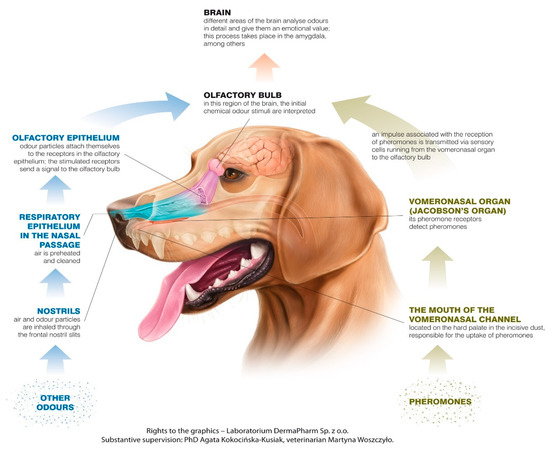
Observing your pet’s behavior and needs is an essential aspect of effective communication. By paying close attention to your pet's behavior, you can gain valuable insights into their emotions, desires, and overall well-being. This allows you to better understand their needs and provide appropriate care and attention.
When observing your pet, it is important to look for signs of happiness, contentment, or stress. For example, a wagging tail and relaxed body posture indicate that your dog is feeling at ease, while a tucked tail and flattened ears may signify fear or anxiety. Similarly, a purring cat with a relaxed body indicates contentment, while a puffed-up tail and hissing may indicate aggression or discomfort.
Additionally, observing your pet's daily routines and habits can help you identify any changes in behavior that may signal underlying health issues. Changes in appetite, bathroom habits, or energy levels should be noted and discussed with a veterinarian if necessary.
By being attentive and observant, you can address your pet's needs promptly and provide the necessary care and support. This strengthens the bond between you and your pet and ensures their overall well-being.
Non-verbal communication with your pet

Non-verbal communication plays a crucial role in developing a strong connection with your pet. While words may not be exchanged, the messages conveyed through touch and actions can have a profound impact on your pet's understanding and trust in you.
Using touch as a means of communication can be highly effective. Gentle strokes or pats can convey love and affection to your pet, while firmer touches may indicate boundaries or correction. Actions such as offering treats, playing games, or providing comfort during stressful situations can also communicate your intentions and emotions to your pet.
Additionally, it is important to consider your pet's senses of sight, smell, and touch. Understanding their preferences and sensitivities can help you communicate more effectively. For example, if your pet is wary of strangers, avoiding direct eye contact or sudden movements can help them feel more at ease. Introducing them to new scents or textures can also stimulate their curiosity and allow for non-verbal communication.
By incorporating non-verbal communication into your interactions with your pet, you can deepen your bond and understanding. Through touch and actions, you can convey love, establish boundaries, and provide comfort—ultimately strengthening your relationship with your furry companion.
Using touch and actions to communicate with your pet

Using touch and actions is a powerful way to communicate with your pet. Physical contact can convey affection, comfort, and reassurance to your furry friend. Whether it's a gentle pat on the head, a warm embrace, or a soothing belly rub, touch can create a deep emotional connection between you and your pet.
Actions also play a crucial role in communication. By engaging in activities with your pet, such as playing fetch or going for a walk, you are not only providing them with physical exercise but also strengthening your bond. These actions show your pet that you care about their well-being and enjoy spending time together.
When using touch and actions to communicate with your pet, it's important to be mindful of their individual preferences and boundaries. Some pets may enjoy being hugged tightly, while others may prefer a more gentle touch. Pay attention to their body language and response to ensure that they are comfortable and receptive to your gestures.
Incorporating touch and actions into your communication repertoire can deepen the connection between you and your pet, fostering trust, happiness, and overall well-being. So go ahead, give your pet a loving pat or engage in an exciting activity together – it's a language they understand and appreciate.
Developing your pet’s senses of sight, smell and touch

Developing your pet's senses of sight, smell, and touch is crucial for enhancing communication and understanding between you and your furry companion. By acknowledging and nurturing these senses, you can create a deeper connection with your pet.
Visual stimulation plays an important role in your pet's life. Providing them with a stimulating environment that includes toys, visual cues, and exposure to natural light can help sharpen their sight. Engaging in playtime activities that involve tracking moving objects or using puzzle toys can also improve their visual acuity.
The sense of smell is highly developed in pets, and it serves as a primary means of communication for them. Encourage your pet's olfactory abilities by introducing them to various scents and engaging in scent-based games. This will not only provide mental stimulation but also strengthen their ability to interpret and respond to different smells.
Touch is another vital sense for pets, as it helps them feel secure and loved. Regular physical contact, such as gentle petting, grooming sessions, and massages, can strengthen the bond between you and your pet. It also allows you to check for any physical abnormalities or discomfort that may require attention.
By developing your pet's senses of sight, smell, and touch, you are providing them with the tools they need to navigate the world around them and communicate effectively with you. This investment in their sensory development will ultimately lead to a stronger bond and a more fulfilling relationship between you and your beloved pet.
Developing a Routine

Developing a routine is crucial for maintaining a healthy relationship with your pet. By establishing consistency and predictability in their daily lives, you can help them feel secure and confident.
One important aspect of developing a routine is setting clear rules and boundaries for your pet. This helps them understand what is expected of them and promotes good behavior. Consistently enforcing these rules will reinforce the message and make it easier for your pet to understand.
Another key element of a routine is providing regular exercise and mental stimulation for your pet. This could include daily walks, playtime, or interactive toys. Not only does this help keep them physically fit, but it also provides an outlet for their energy and prevents boredom.
Additionally, incorporating regular feeding times into your pet's routine can help establish a sense of structure and ensure they are getting the nutrition they need.
Overall, developing a routine helps create a sense of stability and security for your pet. It allows them to anticipate what will happen next and reduces anxiety or stress. By following this guideline, you can create a balanced and harmonious environment for both you and your furry friend.
Consistency and predictability for your pet
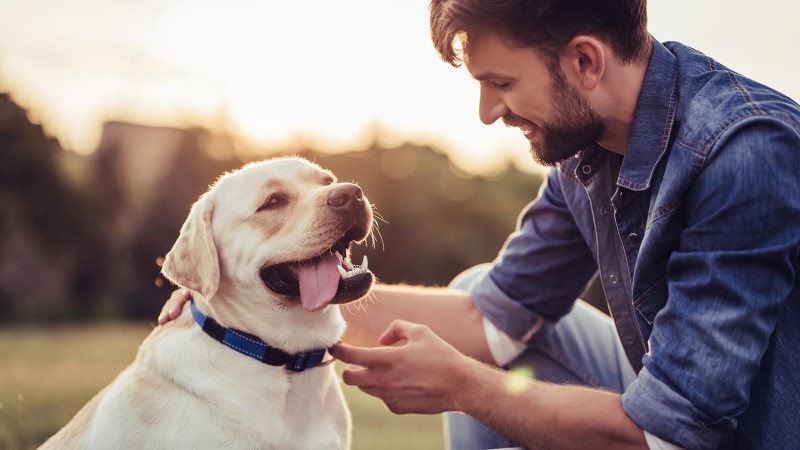
Consistency and predictability are key factors in developing effective communication with your pet. Pets thrive on routine and knowing what to expect from their environment and interactions with their owners. By establishing a consistent daily routine, you can help your pet feel secure and confident in their surroundings.
Consistency involves maintaining a regular schedule for feeding, exercise, playtime, and other activities. This helps your pet anticipate and understand when certain events will occur, reducing their anxiety and promoting a sense of stability. It also allows your pet to establish behavioral patterns and expectations.
Predictability is closely linked to consistency. By providing clear signals and cues, you can help your pet understand what is expected of them in various situations. This can be achieved through the use of consistent commands, gestures, and body language. By using the same cues consistently, your pet will learn to associate specific actions or behaviors with certain commands or signals.
Establishing rules and boundaries is also important in maintaining consistency and predictability. Clearly communicating what behaviors are acceptable and unacceptable helps your pet understand their role in the household. Consistently enforcing these rules ensures that your pet knows what is expected of them at all times.
By maintaining consistency and predictability in your interactions with your pet, you create a stable and harmonious environment that fosters effective communication. This not only strengthens the bond between you and your pet but also contributes to their overall well-being and happiness.Establishing rules and boundaries for your pet

Establishing rules and boundaries for your pet is crucial in maintaining a well-behaved and balanced companion. By setting clear guidelines, you provide structure and guidance for your pet, promoting their overall well-being.
When establishing rules, it is important to be consistent and firm. Clearly communicate what behaviors are acceptable and unacceptable, and reinforce these expectations through positive reinforcement techniques. Rewarding your pet for good behavior encourages them to repeat those actions, while redirecting or ignoring undesirable behaviors helps discourage them.
Setting boundaries also helps ensure the safety of your pet. For example, teaching them not to jump on furniture or not to enter certain rooms can prevent accidents or damage in your home.
It is essential to establish rules and boundaries early on in your pet's life, as it may be more challenging to change established habits later on. Consistency is key, as pets thrive when they know what is expected of them.
Remember to be patient and understanding during the training process. With time, your pet will learn to respect the boundaries and rules you have set, leading to a harmonious and enjoyable relationship for both of you.
Conclusion

In conclusion, effective communication is essential in developing a strong connection with your pet. By understanding their body language, you can decode their emotions and needs, allowing for a deeper understanding between you and your furry companion. Building trust through positive reinforcement and creating a safe environment fosters a sense of security and comfort for your pet. It is important to listen actively, observing their behavior and responding to their needs accordingly. Non-verbal communication, such as touch and actions, can also play a significant role in conveying your love and affection. Establishing a routine with consistency and boundaries helps your pet feel secure and understand their role within the family. By prioritizing communication, you can maintain a healthy relationship with your pet and strengthen the bond you share. Remember, open and effective communication is the key to developing a deeper connection with your pet. So start communicating today and watch your relationship flourish.
The importance of communication in maintaining a healthy relationship with your pet

Effective communication is the key to maintaining a healthy and fulfilling relationship with your pet. By developing a strong line of communication, you are able to understand and meet your pet's needs, ensuring their overall well-being. Communication helps create a sense of trust and mutual understanding between you and your furry friend.
Regular and clear communication allows you to address any issues or concerns your pet may have. By actively listening to their vocalizations, observing their body language, and responding appropriately, you can ensure that their needs are met promptly. This not only strengthens the bond between you and your pet but also helps prevent any potential behavioral problems.
Moreover, through communication, you can establish boundaries and rules for your pet, which aids in their training and discipline. Consistency in your communication approach helps them understand what is expected of them, promoting a harmonious living environment.
When communication is prioritized, it becomes easier to detect any changes in your pet's behavior or health. This enables you to seek timely veterinary care if needed, ensuring their overall well-being.
In conclusion, effective communication plays a vital role in maintaining a healthy relationship with your pet. It fosters trust, understanding, and mutual respect, leading to a stronger bond. By actively listening, observing, and responding to your pet's needs, you can provide them with the love and care they deserve.
Developing a deeper connection with your pet through communication

Developing a deeper connection with your pet through communication is crucial for building a strong and meaningful bond. By effectively communicating with your pet, you can establish trust, understand their needs, and create a harmonious relationship.
Communication allows you to connect with your pet on a deeper level, strengthening the bond between you. When you actively listen to your pet and respond to their cues, you show them that you value their presence and care about their well-being. This fosters a sense of security and comfort, making them more likely to trust and rely on you.
Through communication, you can also gain a better understanding of your pet's emotions and thoughts. By observing their body language, vocalizations, and non-verbal cues, you can decipher their needs and address them promptly. This helps prevent misunderstandings and allows you to provide the necessary support and care.
Moreover, effective communication enhances your pet's overall well-being by promoting a stress-free environment. By using positive reinforcement techniques and avoiding negative communication or punishment, you create a safe space where your pet feels loved, respected, and understood.
In conclusion, developing a deeper connection with your pet through communication is essential for maintaining a healthy and fulfilling relationship. By actively engaging with your pet, understanding their needs, and fostering trust, you can create a bond that lasts a lifetime.





0 Comments